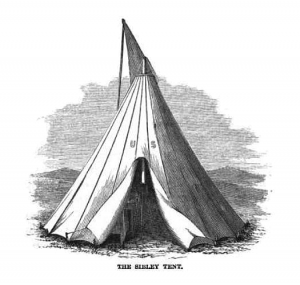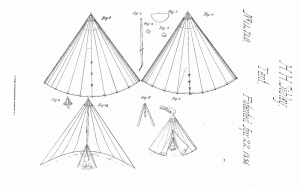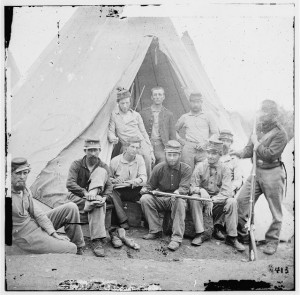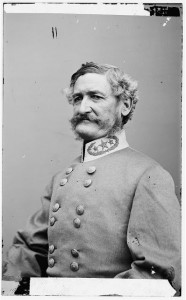Early in January 1862 the 19th NY Volunteer Infantry endured a painfully cold march from Frederick to to Hancock, Maryland. In Hancock the men were dying in unventilated “public buildings”. 150 years ago today the acting commander, Lieut.-Col. Charles H. Stewart took action to change the situation:
The 19th did heavy guard and picket duty at Hancock, sending out details of from thirty-five to sixty men daily to the Potomac, besides escorting parties repairing telegraph lines, and doing provost and engineer duties. The pickets were armed with 100 rounds of ammunition apiece, but were greatly disappointed at not being allowed to fire on the rebel pickets who were in plain sight on the other side.
The mortality in the 19th at this place was very great. The village was one execrable mud hole and what with fatigue and picket duties, colds and fevers began to abound. The unconquerable disposition of the soldiers to shut themselves up close in their quarters, without ventilation, made the evil a hundred fold worse. Dr. Dimon more than once broke out panes in the windows to purify the quarters, but they were repaired as soon as he was gone. Typhus fever, the pest of armies, raged and many deaths occurred. Responsible for the lives of his men, Lieut.-Col. Stewart resolved to encamp in the field. Sibley tents, shaped like wigwams, holding fifteen men each, were obtained. One day’s rations were issued, and on January 25th, the regiment, ignorant of the object of the movement, was marched out of town to a favorable hill side and halted. “By right of companies, to the rear into column; march.” “Stack arms.” “Prepare to form camp.” These orders informed the men of their commander’s resolve. They camped right there in the snow, and in the bleak fields spent the rest of their stay in Hancock. The Sibley tents, warmed with the “stove pipe” Sibley stoves, were well ventilated and a subsidence of fevers in the regiment was soon reported, though it was a sacrifice of comfort to exchange thick walls for canvass tents for quarters. Many a severe cold night, the men sat up all night around the fires smoking and telling stories unable to sleep from the cold.[1]
Henry Hopkins Sibley was granted a patent for his Sibley tent in 1856. Henry Sibley was descended from Massachusetts Bay Colony settlers and born in Louisiana. He was a West Point graduate who served in the U.S. army until the Civil War. During that war he commanded Confederate forces in the West.
__________________________________________________
- [1]Cayuga in the Field, Henry Hall, Auburn, NY, 1873 pp. 87-88↩





Pingback: Skating | Blue Gray Review